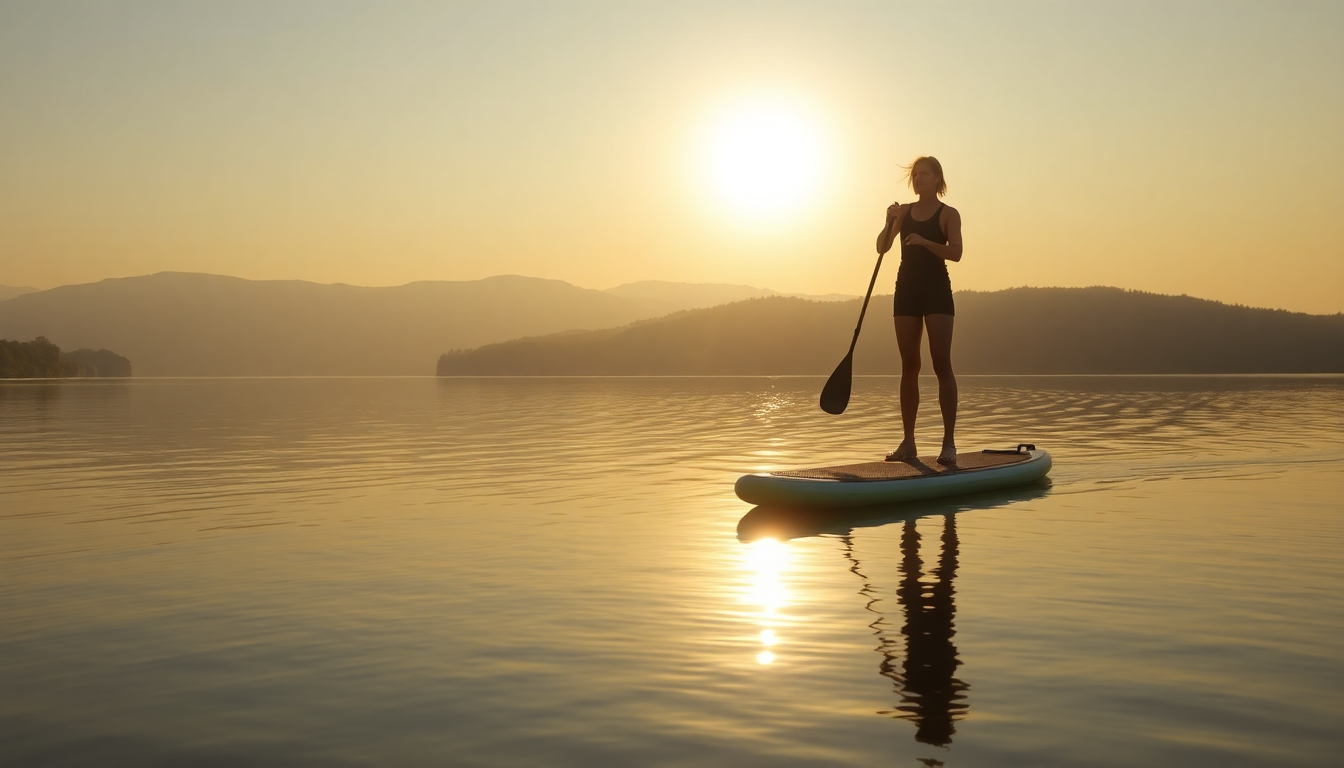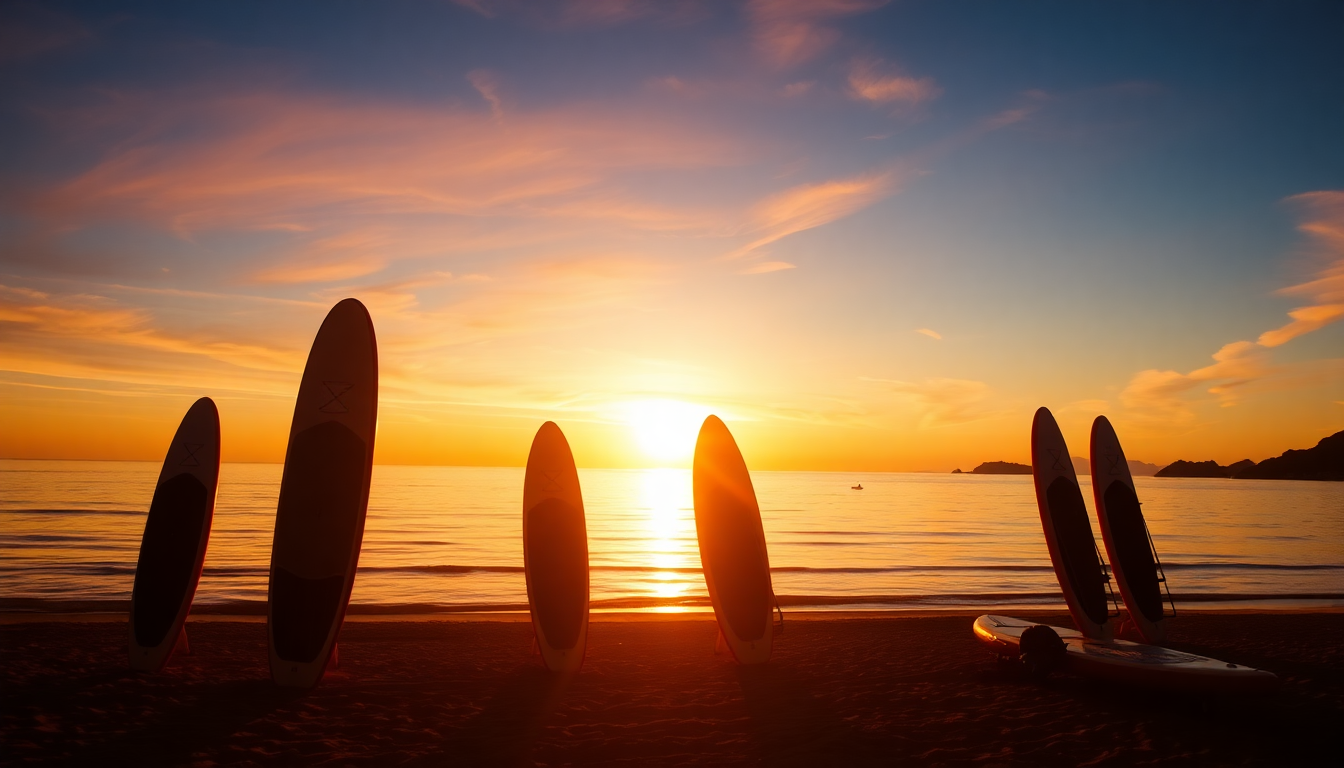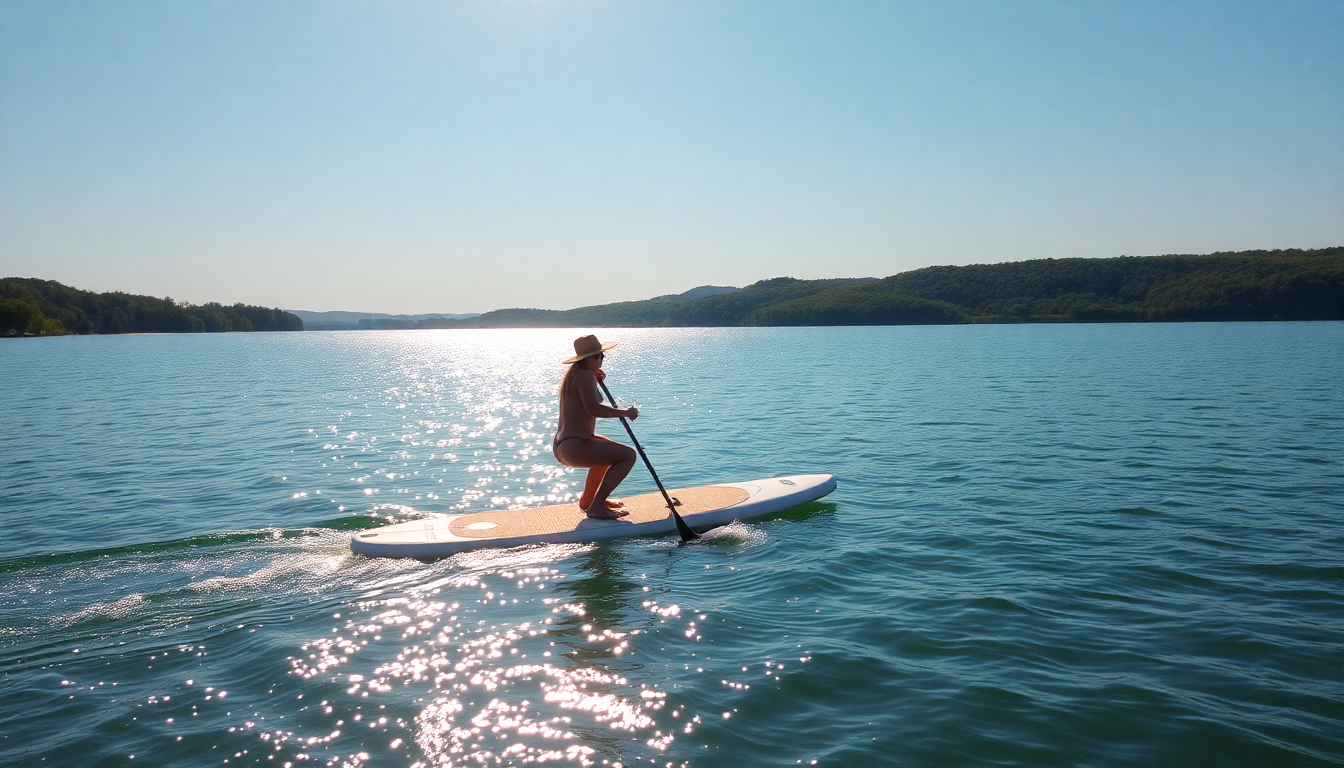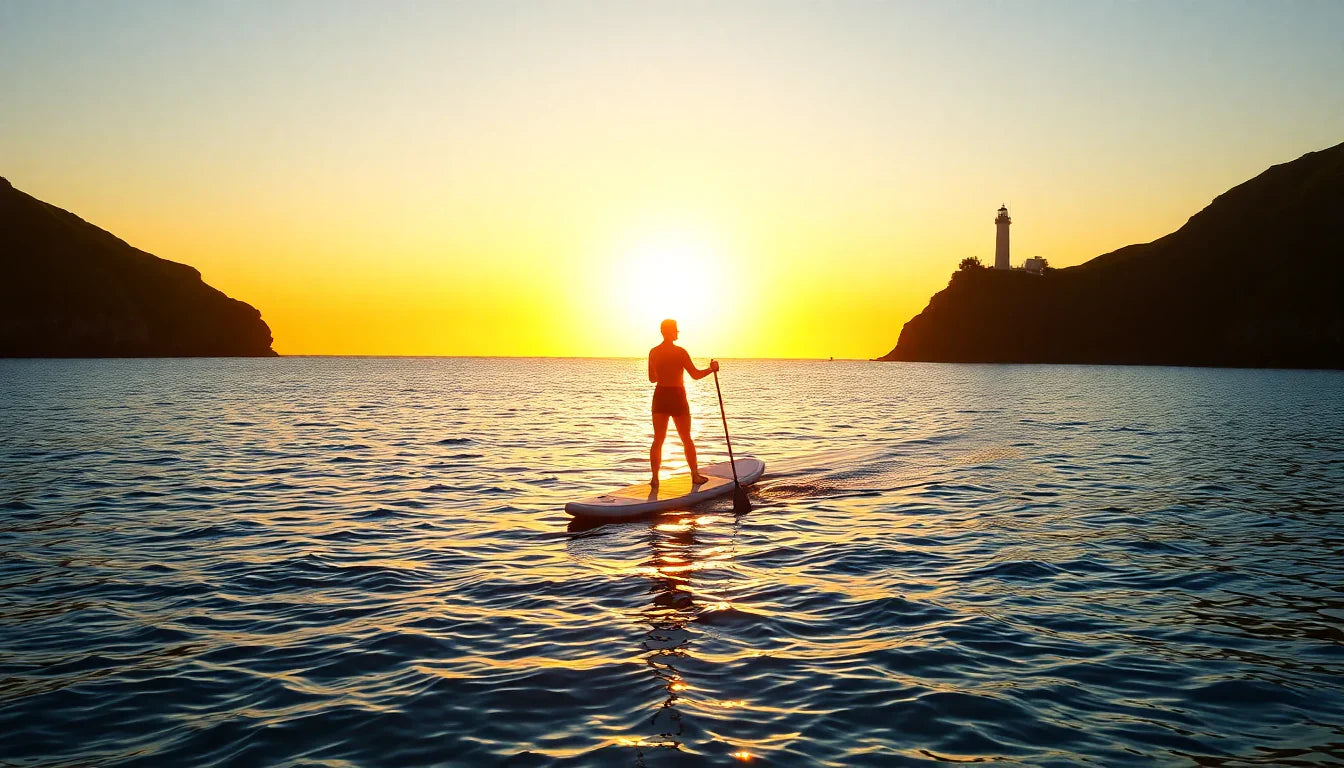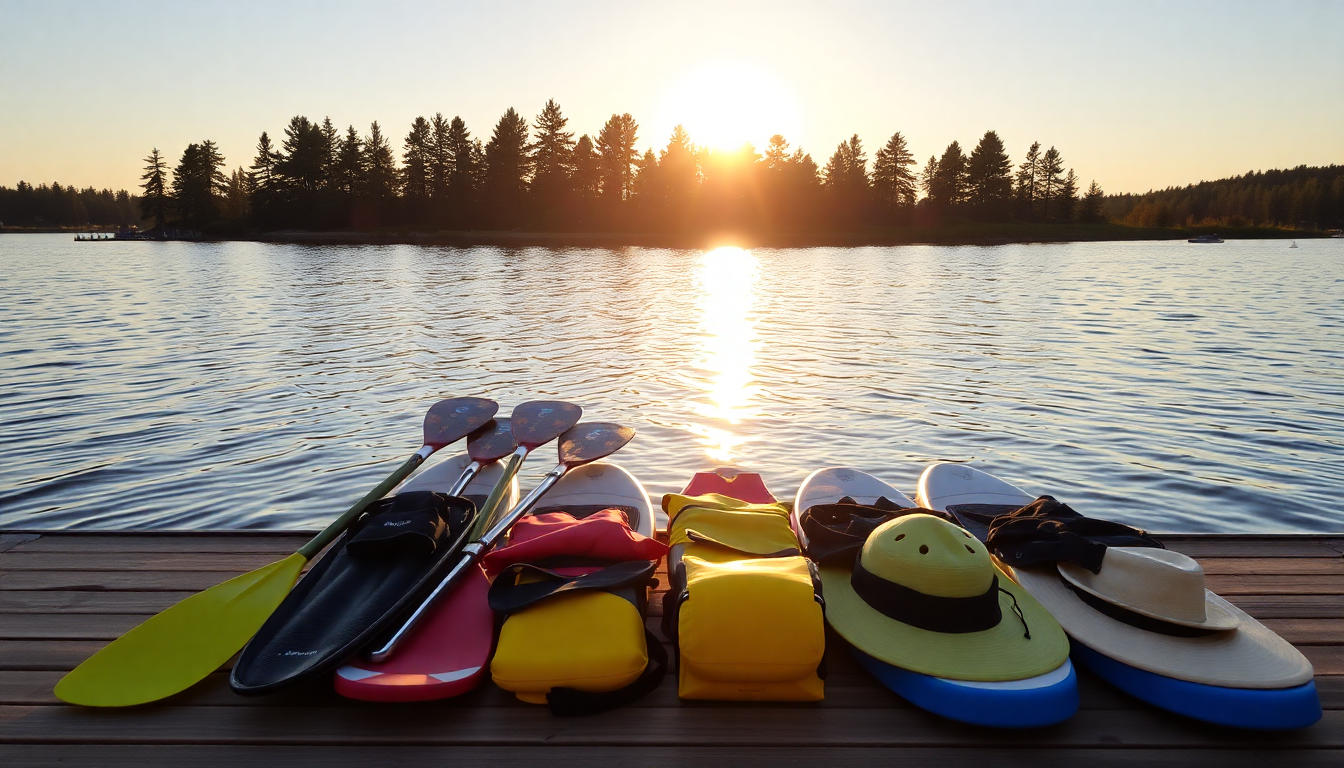5 Types of Stand-Up Paddle Boards and What They're Best For
Stand-up paddle boarding (often called SUP) has evolved from a niche sport into one of the most accessible ways to explore the water. Whether you enjoy calm lakes, coastal waves, or long-distance touring, there’s a specific board style built for your goals. Each type of SUP varies in width, length, and hull shape — these design choices affect balance, speed, and maneuverability. Understanding the differences helps you select a board that fits how you actually use it.
In this detailed guide, we’ll break down five major SUP categories — Yoga, Fishing, Touring, Racing, and All-Around — explaining what makes each unique and which environment they thrive in. Let’s dive in!
1. Yoga SUPs — Built for Balance and Calm
If your favorite workout is yoga, taking your mat to the water adds a new dimension. Yoga SUPs are specially designed to maximize stability and create a comfortable space for poses. These boards are usually between 33” and 36” wide, offering a large standing surface and excellent balance. Their decks are covered with soft, grippy EVA foam, providing traction and cushioning.
The nose of a yoga SUP tends to be broad and rounded rather than pointed. This shape increases surface contact with the water, enhancing steadiness during movement. However, it also means less speed and tracking precision — so yoga boards perform best on calm lakes, bays, or harbors where waves are minimal. Many models include tie-down points for water bottles or small gear, and some inflatables come with carry handles for easy transport.
Best For: Yoga sessions, fitness routines, mindfulness paddling, beginners wanting maximum stability.
2. Fishing SUPs — Your Floating Casting Platform
For anglers, SUP fishing has become a quiet revolution. A fishing SUP gives you access to spots too shallow or narrow for boats, with the added advantage of standing while casting. You can sneak up on fish silently and enjoy a 360° field of view without the bulk of a kayak.
Fishing SUPs are wider than average (32–36”), with extra volume for gear weight. Look for boards with D-rings, bungee cords, or built-in mounts for rod holders and coolers. Some models feature reinforced rails or non-slip deck padding for comfort when moving around. The ideal shape combines a slightly tapered nose for better tracking with a wide midsection that keeps you stable while reeling in a catch.
Pro Tip: When outfitting your board, secure gear evenly to maintain balance. And always use a leash — even small waves can drift a loaded SUP away quickly.
Best For: Fishing on lakes, calm rivers, or coastal shallows where precision and silence matter.
3. Touring SUPs — Designed to Explore Farther
Touring SUPs are the adventurers of the paddle world. With their long, narrow outlines and pointed noses, they slice through water efficiently and maintain a straight course with minimal effort. These boards are ideal for covering longer distances or multi-hour paddles.
The streamlined hull (often called a displacement hull) lets water flow smoothly along the sides, reducing drag and conserving energy. Many touring boards include tie-down bungees at the nose or tail, perfect for securing dry bags, snacks, and water bottles. Stability is moderate — they’re faster than all-around boards but require slightly more balance.
Typical Dimensions: 12’–14’ long and 28”–32” wide, with a larger single fin for straight tracking. Some inflatables even pack into backpacks for easy travel.
Best For: Long paddles, exploring coastlines, fitness cruising, or paddlers seeking endurance over speed bursts.
4. Racing SUPs — Speed, Skill, and Precision
For those who crave performance, racing SUPs deliver unmatched glide and pace. These sleek boards are designed for efficiency, often between 12’6” and 14’ long but significantly narrower — sometimes just 24”. The combination of a displacement hull and a stiff construction (often carbon fiber or high-density epoxy) minimizes drag and maximizes acceleration.
Because they sit deeper in the water, racing boards displace more volume, creating a hydrodynamic profile that cuts through waves. However, they demand good balance and strong technique. Beginners may find them tippy, but experienced paddlers appreciate their responsiveness and pure speed.
Racing SUPs also double as excellent fitness trainers. Their design encourages consistent paddle cadence and efficient strokes — perfect for developing endurance or training for competitions.
Best For: Competitive paddlers, endurance athletes, and anyone focused on top performance and straight-line speed.
5. All-Around SUPs — The Do-It-All Board
If you’re buying your first paddle board or simply want versatility, an all-around SUP is the perfect entry point. It’s designed to handle a little bit of everything — from calm water cruising to small surf and even light yoga or fitness sessions.
All-around boards generally measure 10’–11’6” long and 31”–33” wide, striking a balance between stability and maneuverability. Their rounded noses make them forgiving, while the slightly narrower tail improves tracking. Inflatable versions are popular for portability and storage convenience.
Many paddlers start with an all-around SUP before branching into specialized boards. Once you’ve tried a few disciplines, you’ll know whether speed, distance, or balance matters most — and you can invest in a touring or racing model later.
Best For: Beginners, casual paddlers, families, rental businesses, or those who love flexibility.
How to Choose the Right SUP
When selecting your paddle board, consider your weight, skill level, water type, and main activity. Heavier paddlers or those carrying gear should choose higher volume boards for stability. Flat-water enthusiasts might prefer wider decks, while speed-focused paddlers need narrow, displacement hulls. If storage space or travel convenience matters, an inflatable SUP is an excellent modern choice.
Lastly, never overlook your paddle and fin setup — they significantly affect control and efficiency. A properly sized paddle (roughly 6–8 inches taller than you) makes paddling smoother, while the right fin setup enhances tracking and turns.
Final Thoughts
Stand-up paddle boarding continues to grow because it’s simple, rewarding, and connects people with nature. Understanding the different SUP styles ensures that your board matches your goals — whether that’s mindful yoga, peaceful fishing, thrilling races, or relaxing weekend tours.
Each type of board brings its own joy: yoga SUPs calm the mind, fishing SUPs spark adventure, touring boards expand horizons, racing SUPs fuel adrenaline, and all-around boards keep everything fun and easy. No matter where your paddling journey begins, Wkersiy is here to help you find the perfect board and enjoy the ride.




